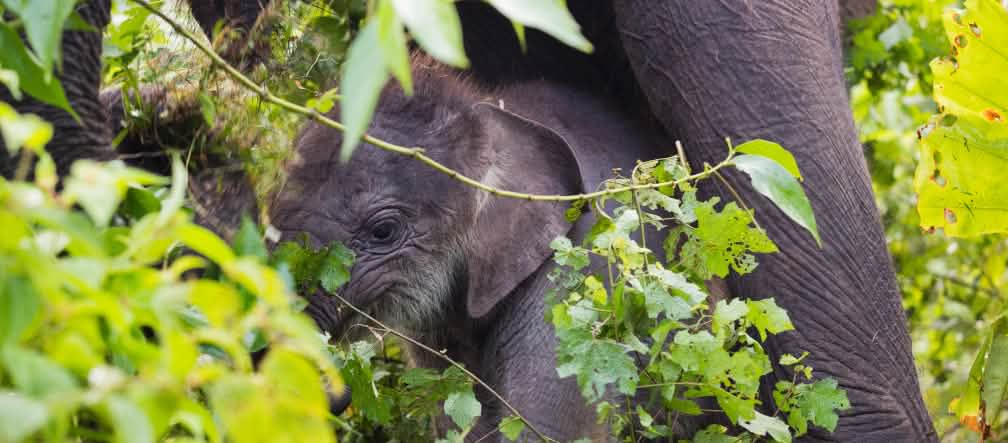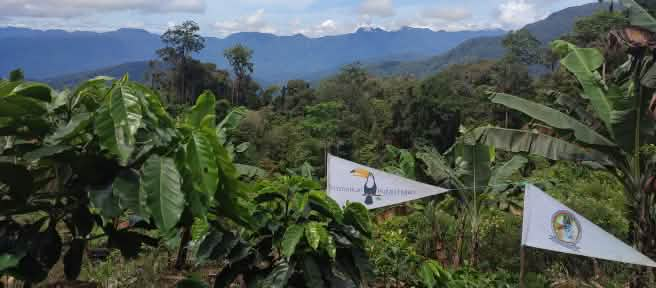
Protect Leuser's iconic wildlife!
Nothing compares to the Leuser Ecosystem on Sumatra. It's the last place on Earth where orangutans, tigers, elephants and rhinos share a habitat. That may soon be history – an Indonesian court is deciding on a new land use plan that would leave it wide open for roads, plantations and mining. Tell the government to protect Leuser now!
News and updatesTo: Aceh Governor, Home Affairs Minister, the parliament of Aceh
“The Aceh Spatial Plan is a threat to the unique Leuser Ecosystem. It must be cancelled to ensure the survival of Sumatra’s iconic wildlife.”The biodiversity of the Leuser Ecosystem, a UNESCO World Heritage Site, is simply stunning – environmentalists consider it to be one of the most important protected areas of the planet. Its peatland forests are home to Sumatra’s biggest population of orangutans, and the largest flower in the world, the Rafflesia, thrives in its rainforests. Four million people rely on its intact forests for clean drinking water and food security. From a global perspective, Leuser is a vital carbon sink and climate regulator.
The autonomous province Aceh, however, has adopted a spatial plan in which the 26,000 km² of the Leuser Ecosystem are not listed as a protected area. In other words, the plan opens up this world-class natural treasure for roads, mining and oil palm plantations. All previous efforts to preserve the forests are now in danger.
Out of concern for their home, the people of Aceh filed a class-action suit in January 2016 to force their governor to cancel the spatial plan and guarantee Leuser’s protection. The suit, however, was rejected. Since then, Aceh's environmental activists have been working tirelessly to improve the protection status of the Leuser Ecosystem, but the appeal proceedings against the spatial plan are currently bogged down. The activists need all the international support they can get – please sign our petition and back them in their struggle against this potentially disastrous law.
Leuser Ecosystem protected area
The Leuser Ecosystem protected area (KEL, Kawasan Ekosistem Leuser) on the island of Sumatra is one of the largest and most important nature reserves in Indonesia. KEL is named after its highest mountain, Gunung Leuser (3,404 meters). Nearly 90 percent of the ecosystem is located in the autonomous province of Aceh, the rest in North Sumatra province.
Its coastal landscapes, lowland and montane rainforests, peatlands and swamps are among the most biodiverse in the world: 8,500 plant species have been documented, including tropical trees such as meranti (Shorea sp.), damar (Hopea spp.) and keruing (Dipterocarpus spp.). The world’s largest flower, the Rafflesia, also thrives here.
Leuser is renowned for its wildlife, and is the last place on Earth where four iconic mammals – the orangutan, the very rare Sumatran tiger, the Sumatran rhino and the Sumatran elephant share the same habitat. At least seven cat species are at home there, including the clouded leopard (Neofelis nebulosa), the Asian golden cat (Felis temmincki) and the marbled cat (Felis marmorata). Other mammals include Indian wild dogs (Cuon alpinus), sun bears (Helarctos malayanus) and Sumatran serows (Capricomis sumatrensis).
Rainforest Action Network: The Last Place on Earth
Gunung Leuser National Park, which was founded in 1995, encompasses a number of wildlife reserves and covers an area of roughly 10,000 km² – the core of the 26,000 km² Leuser Ecosystem. Agriculture and human habitation is allowed in the buffer zones, but not destructive industries.
The Leuser International Foundation is responsible for the protection of KEL and has received €50.5 million in support from the EU.
Leuser International Foundation
Threats: logging, palm oil, roads, mining
Illegal logging funded both sides of the Aceh conflict (1976-2005). By the end of the Suharto regime in 1998, one quarter of the Leuser Ecosystem had been destroyed. Negotiations in the wake of the devastating tsunami December 26, 2004 brought peace but led to a dramatic increase in logging. Local environmental organizations estimate that only half of the Leuser Ecosystem is still forested, and of that only five percent is still primary forest.
According to NASA satellite data evaluated by the University of Maryland, more than 300 km² of rainforest were destroyed between 2002 and 2008. Between 2008 and 2013, however, the rate of destruction more than doubled to 803 km² according to Global Forest Watch.
One direct consequence of deforestation – apart from the loss of rainforest, biodiversity, clean water and carbon sequestration – are the terrible floods that frequently strike Aceh.
Road construction (Ladia Galaska, a road system through the KEL and partly still under construction) is a serious threat to the very existence of the ecosystem by providing easy accessibility to previously remote regions.
International responsibility: palm oil
Oil palm plantations have been established in numerous places in the Leuser Ecosystem in recent years. In many cases, they belong to former independence fighters and local politicians.
Palm oil from Aceh is sold on the world market. Rainforest Rescue worked to bring PT Kallista Alam, the palm oil company that partly cleared and torched the unique Tripa peat swamps to plant oil palms, to justice.
Indonesia: heavy fine for palm oil company for slash-and-burn
A study by the Indonesian NGO Greenomics published in May 2015 documented how Aloer Timur – a company that supplies major palm oil distributors Musim Mas and Wilmar International – is clear-cutting large tracts of the Leuser Ecosystem. While the clearing of forests in Leuser violates the Indonesian Palm Oil Pledge (IPOP) signed by both companies, neither Musim Mas nor Wilmar International have have ended their business relationships with Aloer Timur since the publication of the report.
Greenomics: IPOP Implementation Report
Land use planning
The provincial government adopted the Aceh Spatial Plan (Qanun RTRW 19, 2013) regulating land use in 2013. Astonishingly, the plan makes no mention of the Leuser Ecosystem – nothing stands in the way of new plantations, road construction and other destructive activities in the protected area. Conservationists and Aceh residents have protested and the Ministry of Home Affairs in Jakarta has called on the governor to withdraw the Aceh Spatial Plan. Activists have convinced the environmental authorities, but the appeal proceedings against the spatial plan are currently bogged down.
Class-action suit against Aceh province
Aceh’s association of indigenous peoples (JKMA), NGOs and dedicated citizens have been resisting the destruction of Leuser for years. International groups have also joined the struggle against the provincial government.
The Aceh Citizen Lawsuit Movement (Gerakan Rakyat Aceh Menggugat, GerAM) has filed a class-action lawsuit against Indonesia’s Ministry of Home Affairs and others before the Administrative Court in Jakarta calling for the cancellation of the Aceh Spatial Plan.
GerAM is basing its suit on the fact that the Aceh Spatial Plan does not list certain areas of the Leuser Ecosystem as protected areas. These include the Tripa swamps, habitat of the Sumatran orangutan. According to GerAM, the spatial plan also violates national law. “Business interests are behind this,” say the plaintiffs.
The environmental network WALHI (Friends of the Earth Indonesia) had already taken the matter to the Supreme Court in Jakarta in 2014. Their suit was rejected, however.
To: Aceh Governor, Home Affairs Minister, the parliament of Aceh
Dear Governor, Minister, Ladies and Gentlemen,
The Leuser Ecosystem is a unique treasure of worldwide significance. It is the last place on Earth where iconic species such as tigers, rhinos, elephants and orangutans share the same habitat. Millions of people rely on it for clean drinking water, fish and forest products.
Despite its importance, the ecosystem has been severely damaged by logging and plantations. Roads are being built through the protected area and mining is taking place in numerous locations. As a direct consequence of the destruction, the population of Aceh is suffering from devastating floods and landslides.
The Leuser Ecosystem is now facing a further threat: with its Aceh Spatial Plan, the provincial government has removed protections from large regions of forest.
This move is in violation of the Indonesian national law on Aceh Governance 11/2006 and the National Spatial Planning Law 26/2007. In 2014, the Ministry of Home Affairs submitted its request to revise the Aceh Spatial Plan so that it includes the Leuser Ecosystem in the National Strategic Area. The government of Aceh has yet to comply.
Out of concern for their home, local environmentalists have filed a class-action suit to compel the governor to guarantee the protection of the Leuser Ecosystem.
Please ensure that the Aceh Spatial Plan is cancelled and effective protection put in place for the Leuser Ecosystem. I call on you to take action on behalf of Leuser’s people, wildlife and forests.
Sincerely,

The plantation of jungle, fruit and coffee trees in the Leuser ecosystem is thriving. After three years, the Tigers of Pining harvest the first fruits and defend the rainforest from logging, mining and dams.
Encouraging news from our projects in the Leuser Ecosystem in Sumatra, Indonesia: Wild orangutans are returning to the reforested areas, and our rangers are curbing poaching.
Working as a forest ranger on the Indonesian island of Sumatra is not a job for the faint-hearted: In late January, a team of four rangers supported by Rainforest Rescue was attacked by a tiger.
On the upper reaches of the Tamiang River, the residents of the village of Pining are healing the wounds in the Leuser ecosystem. Thousands of seedlings will grow up to restore the rainforest.